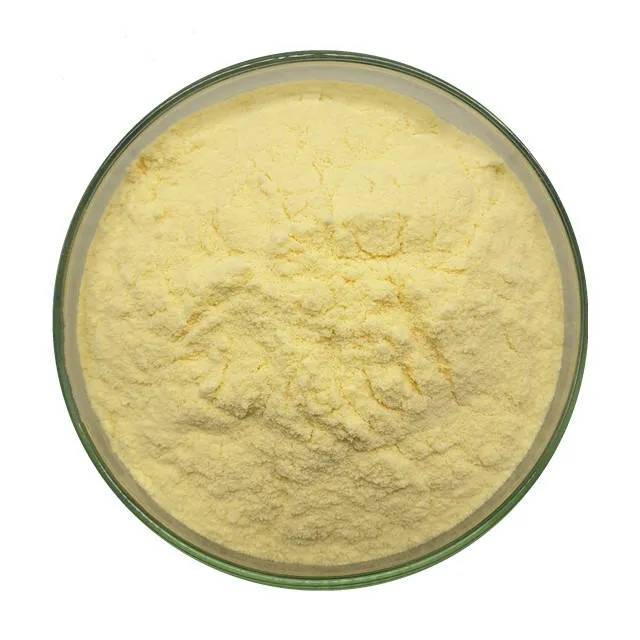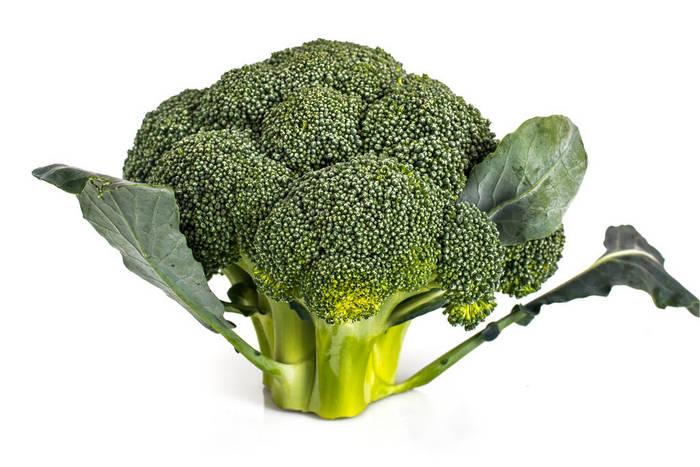Broccoli Seed Extract Glucoraphanin Powder Bulk
Product Name:Broccoli Seed Extract Glucoraphanin Powder Bulk
Assay:1%,5%,10%,13%
Testing Method: HPLC
Appearance:Light Yellow Powder
Pesticide Residue:Comply with (EC) No 396/2005 Standard
- Description
- Data Sheet
- Certificate
-
What is Broccoli Seed Extract Glucoraphanin Powder?
Glucoraphanin is a natural active product mainly present in broccoli seeds and seedlings, which can be converted into sulforaphane through the action of black mustard enzymes or intestinal microorganisms. Glucoraphanin is currently one of the strongest activators of Nrf2, which can activate various cellular protective effects such as detoxification, antioxidant, and anti-inflammatory. Glucoraphanin belongs to a naturally occurring "thioglucoside" compound in cruciferous vegetables.
Green Spring Technology supplies Glucoraphanin Powder from purely natural sources, the raw material broccoli seeds from broccoli planting bases, the Glucoraphanin Powder content is high, up to 20%. The products from raw materials to finished products, the production of the whole process of controllable and traceable, and a variety of pollutants are detected in line with global standards.
Specification:
Product Name
Broccoli Seed Extract Glucoraphanin Powder
Latin Name
Brassica oleracea L.var.italic Planch.
CAS No.
21414-41-5
Source
Broccoli Seed
Active Ingredients
glucoraphanin
Assay
1%,5%,10%,13%
Testing Method
HPLC
Appearance
Light Yellow Powder
Pesticide Residue
Comply with (EC) No 396/2005 Standard
Regulation:
It conforms to EU regulations.
Looking for a Quotation?Benefits:
Antioxidant Activity
Maryati et al. inoculated broccoli extract with Lactobacillus bulgaricus, Streptococcus thermophilus, Lactobacillus acidophilus and Bifidobacterium bifidum ( Bifidobacterium bifidum) mixed fermenter, 20% fermenter inoculum fermentation for 24 h, the antioxidant activity of fermented broccoli reached the maximum, when the total phenol content decreased, suggesting that the material basis of the antioxidant capacity of fermentation products may not be polyphenols, but rather a correlation with active substances such as glucoraphanin in broccoli extracts.
Regulation of Intestinal Flora
Thioglycosides and glucoraphanin-rich broccoli extracts have been shown to modulate intestinal flora. An exploratory study showed that consumption of glucoraphanin-rich sauerkraut resulted in changes in the composition of the intestinal flora of the subject population, with a significant increase in the abundance of lactic acid bacteria associated with sauerkraut fermentation (e.g., Lactobacillus plantarum and Lactobacillus brevis). In a placebo-controlled, semi-open-label intervention conducted by Yanaka et al, people with chronic functional constipation consumed 20 g of young broccoli sprouts enriched with glucoraphanin or alfalfa sprouts free of thiosides per day for 4 weeks. Compared to alfalfa sprout consumption, broccoli sprout consumption significantly reduced the Constipation Scoring System score, increased bowel frequency, shortened bowel duration, and increased the proportion of butyric acid-producing Bifidobacterium spp. and Clostridium XVIa in the intestinal flora.
Alleviation of Metabolic Syndrome
In recent years, broccoli extract glucoraphanin and its active metabolites have shown good properties in reducing fat accumulation, improving insulin sensitivity, reducing inflammation, etc., and thus their potential in alleviating metabolic syndrome has gained the attention of researchers. Xu Xinxing et al. added broccoli lyophilised powder or glucoraphanin powder to the feed and fed it to mice on a high-fat diet for 8 weeks, and found that the glucoraphanin feeding effectively inhibited the increase in body mass, liver mass, mesenteric fat, and perirenal fat lipid accumulation, while reducing oxidative stress levels in the liver, and upregulated the levels of lipid associated with lipid accumulation, inhibited the increase of body mass and liver mass, reduced the accumulation of epididymal fat, mesenteric fat and perirenal fat, and at the same time, reduced the level of oxidative stress, and up-regulated the expression of peroxisome proliferator-activated receptor α (PPARα), carnitine palmitoyltransferase-1 (CPT1), and peroxisomal acyl-coenzyme A oxidase (ACOX) genes related to lipid metabolism in the liver, while feeding broccoli had no effect on the dietary effects of high-fat diets on the body mass and liver mass and on the lipid accumulation of ependymal fat, mesenteric fat, and perirenal fat. broccoli improved lipid metabolism in mice fed a high-fat diet to a lesser extent than feeding glucoraphanin powder.
Applications:
In the Food Field:
In 2001, researchers for the first time used glucoraphanin in nutritional supplements and functional foods, and this functional food became popular in Europe and the US. In 2016, broccoli seed extract passed the GRAS (Generally Recognised As Safe) certification of the Food and Drug Administration of the U.S.; and in 2017, aqueous extracts of broccoli seeds, containing 13-20% glucoraphanin, were approved as a new food ingredient in China. It officially included broccoli seed aqueous extract in the food ingredient database. This means that glucoraphanin can be widely used in the food industry from now on.
In Pharmaceutical:
Glucoraphanin powder is also used in the pharmaceutical field as an intermediate.
-
Download
Broccoli Seed Extract Glucoraphanin Powder COA


 English
English French
French Spanish
Spanish Russian
Russian Korean
Korean Japanese
Japanese










